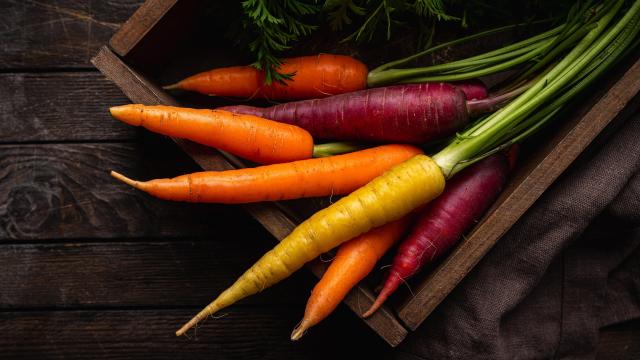Buying vegetables in bulk is a good way to save money on already cheap (or not so cheap) vegetables. Many of them will keep for weeks in a cool, dry place, but even the most zealous vegetable enjoyer can find themselves with too much of a good thing. In moments like these, you turn to your freezer.
But unlike ginger or even tomatoes, chucking raw vegetables like carrots or broccoli into a plastic freezer bag and popping them into the icebox is not enough. Doing it that way can adversely affect the vegetable’s flavour, texture, and even colour. To ensure your veggies remain as good as possible for as long as possible, you need to blanch them first.
In her article about freezing carrots, professional home economist Getty Stewart explains that blanching is more effective at stopping enzymatic action (which “ages” the carrots) than freezing alone:
Carrots, like most vegetables, contain enzymes that cause them to continue to age after they’re harvested, even in our fridge. The ageing process does not stop in cold temperatures – even freezing temperatures. To stop the enzymes and preserve flavour, colour, texture and nutrient loss, you need to blanch veggies, including root vegetables like carrots, before freezing. Luckily, blanching is super easy to do.
Blanching is super easy. All you have to do is briefly cook the vegetable in boiling water or steam, then plunge it into an ice bath to stop the cooking process. Doing so stops the enzymatic action that can lead to a loss of flavour, colour, and texture.
The timing, however, is important. According to the National Centre for Home Food Preservation, over- and under-blanching can cause their own set of problems:
Blanching time is crucial and varies with the vegetable and size. Under-blanching stimulates the activity of enzymes and is worse than no blanching. Over-blanching causes loss of flavour, colour, vitamins and minerals.
Luckily, they have a handy blanching time chart can consult to avoid either of these terrible fates (scroll down to the bottom of this page). Once your vegetables have been boiled for the appropriate amount of time in unsalted water, place them in an ice bath for as long as they were blanched, then dry them completely using clean kitchen towels or a salad spinner. Lay them out on a baking sheet or large plate, then freeze before transferring to a bag for longterm storage. Most blanched vegetables will keep in the freezer for up to a year and can be cooked straight from frozen without thawing (the blanching actually cuts down on cooking time).

Leave a Reply
You must be logged in to post a comment.